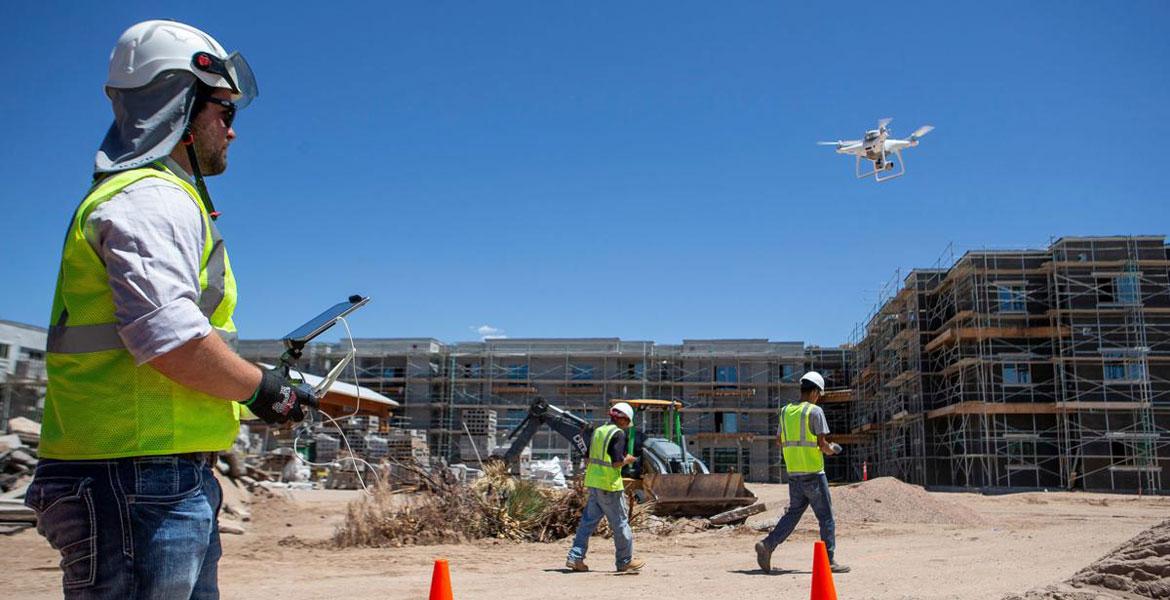Integration of Drones into Construction Workflows
Drones are rapidly transforming construction workflows by providing new and efficient methods for data collection, progress tracking, and communication. This lesson explores how to integrate drones seamlessly into your construction projects to maximize their benefits.
Planning and Scheduling Drone Flights for Progress Tracking and Inspections
Effective drone use in construction begins with meticulous planning and scheduling. Here are some crucial steps to consider:
- Define Objectives: Clearly identify the goals of your drone flight mission. Are you capturing photos for progress tracking, conducting roof inspections, or collecting data for stockpile measurements? Knowing your objectives will help determine the flight path, altitude, and image capture settings.
- Flight Path Planning: Utilize drone flight planning software to create pre-programmed flight paths that ensure efficient data collection and minimize redundant coverage. These software tools often integrate with visual overlays of the construction site, allowing for precise planning of the drone’s route.
- Scheduling Considerations: Schedule your drone flights during optimal weather conditions, avoiding high winds, rain, or low visibility. Be mindful of other construction activities on the site and plan your flights accordingly to minimize disruption. Communicate your flight schedule with workers and ensure proper safety measures are in place during drone operation.

Data Analysis and Creation of 3D Models from Drone Imagery
Once you have captured data using your drone, the next step is to analyze and extract valuable insights. Software specifically designed for drone data processing allows you to:
- Image Stitching: Create high-resolution orthomosaics by stitching together multiple photos captured by the drone, providing a complete visual representation of the construction site.
- 3D Modeling: Convert drone-captured images into 3D point cloud models. These models offer a precise digital representation of the site topography, facilitating volume calculations, stockpile measurements, and progress visualization.
- Data Overlays: Overlay drone-captured data onto existing building plans or 3D models for comparison and progress tracking. This enables quick identification of deviations from the plan and helps pinpoint areas requiring adjustments.
Using Drone Data for Progress Reports and Communication with Stakeholders
The data collected and analyzed from drone flights can be instrumental in improving communication and collaboration on construction projects. Here are some ways to leverage drone data for effective communication:
- Progress Reports: Integrate drone-captured images, orthomosaics, or 3D models into progress reports to visually showcase project advancement. This provides stakeholders with a clear understanding of the construction progress and facilitates informed decision-making.
- Client Communication: Drone data, such as high-resolution photos or 3D models, can be used to effectively communicate project details and progress to clients. Virtual site tours can be created using drone footage, allowing clients to remotely monitor construction progress without needing to be physically present on site.
- Improved Collaboration: Share drone-captured data with project engineers, architects, and subcontractors to enhance collaboration and identify potential issues early on. Real-time data visualization can facilitate better coordination and problem-solving throughout the construction process.
By integrating drones into your construction workflows and effectively utilizing the data they capture, you can gain valuable insights for improved progress tracking, streamlined inspections, and enhanced communication with project stakeholders.
